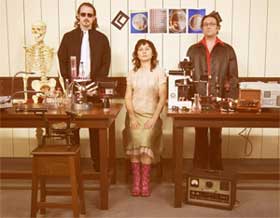 The Living Screen project overlays digital pixels over biological pixels to explore the tension between the inanimate and the animate and the digital versus the biological.
The Living Screen project overlays digital pixels over biological pixels to explore the tension between the inanimate and the animate and the digital versus the biological.
The Nano-Movies are projected (projection is 200 microns square in size) on Living Screens made from different tissue sources (skin, blood, sperm or cornea cells) that transform, react and change over time and eventually die. The properties of these screens inform the content of the projected Nano-Movies. They contort the Nano-Movie, and confront the spectators with issues such as life, death, virtuality and reality.
The Living Screen has many connections to early (pre-1905) motion pictures that fall under the category of the ‘cinema of attractions’. Tom Gunning defines the ‘cinema of attractions’ as a form of confrontation that addresses the audience directly. “Rather than being an involvement with narrative action or empathy with character psychology, the cinema of attractions solicits a highly conscious awareness of the film image engaging with the viewers’ curiosity.�
Fairgrounds and vaudeville houses were where early cinema found its audiences. It was also a form of safe house for the Other. With Bio-Art proliferating throughout the world, the art galleries of today are no less a freak show, as is The Living Screen. I particularly like that last statement. Though i have the feeling that freak shows are in the labs as well and that the projects of researchers in bio-tech might sometimes go well beyond what artists could imagine.
 Details of a movie projected on a mouse cornea
Details of a movie projected on a mouse cornea
A project by Bio Kino: Tanja Visosevic, Guy Ben Ary and Bruce Murphy.
